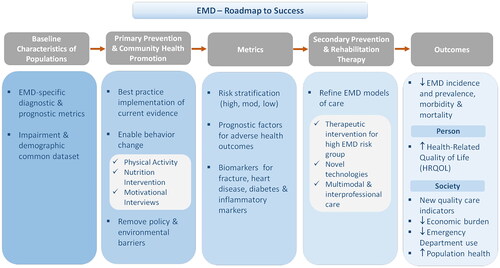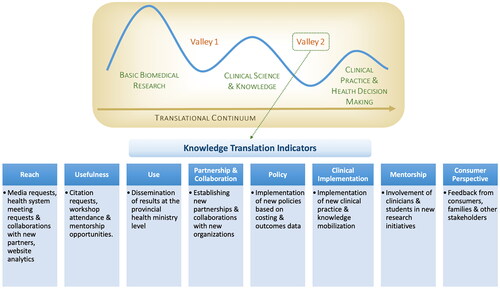Figures & data
Figure 1. A model for understanding EMD risk and the adverse outcomes of EMD expression over the course of an individual’s lifetime.

Figure 2. An overview of the RIISC team’s roadmap to successful amelioration of EMD risk.

Figure 3. RIISC team’s knowledge translation indicators of success. (clinical translational continuum modified from steven reis, University of pittsburgh and harold pincus, columbia University and knowledge translation indicators modified from the University of Toronto, department of Medicine academic Strategic plan 2011–2016).

